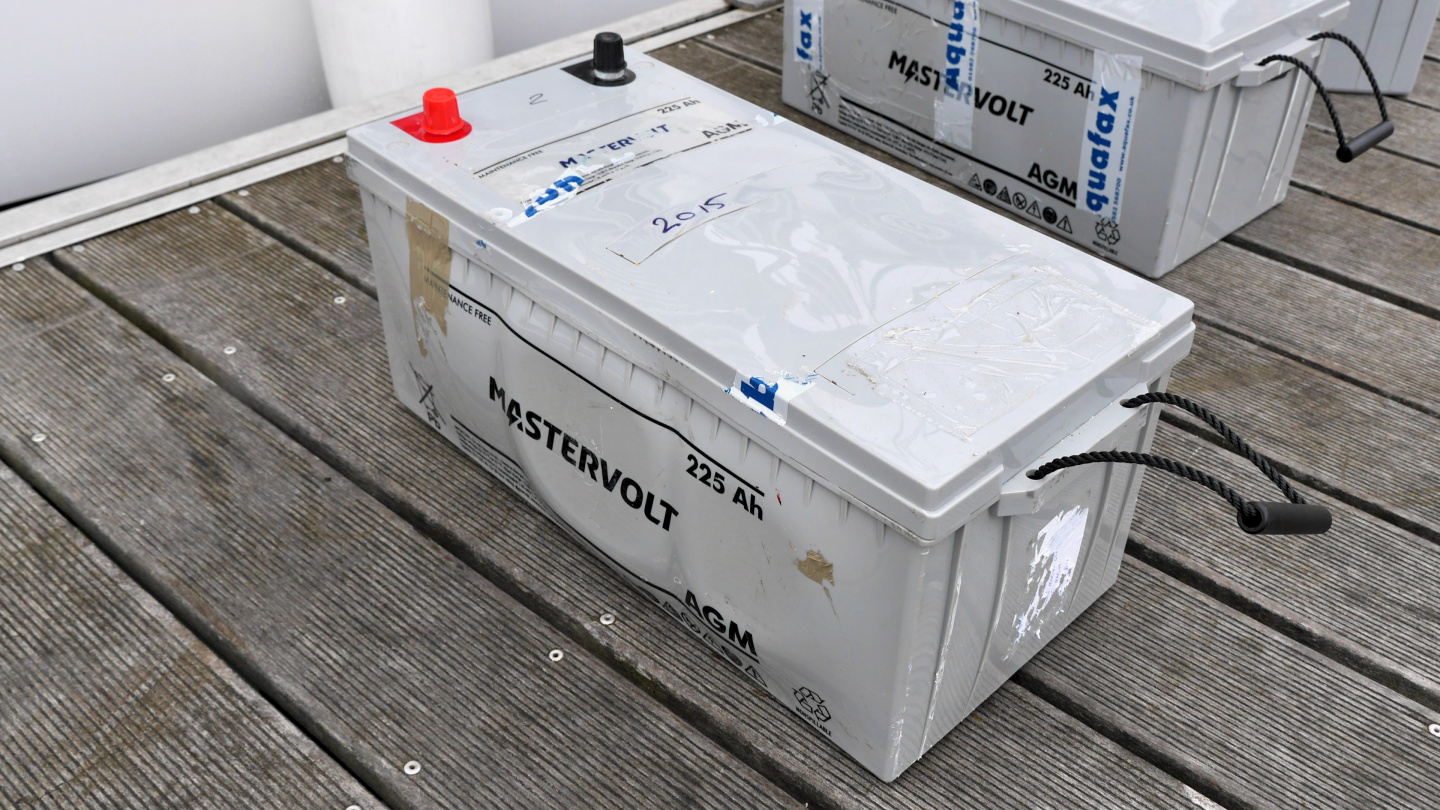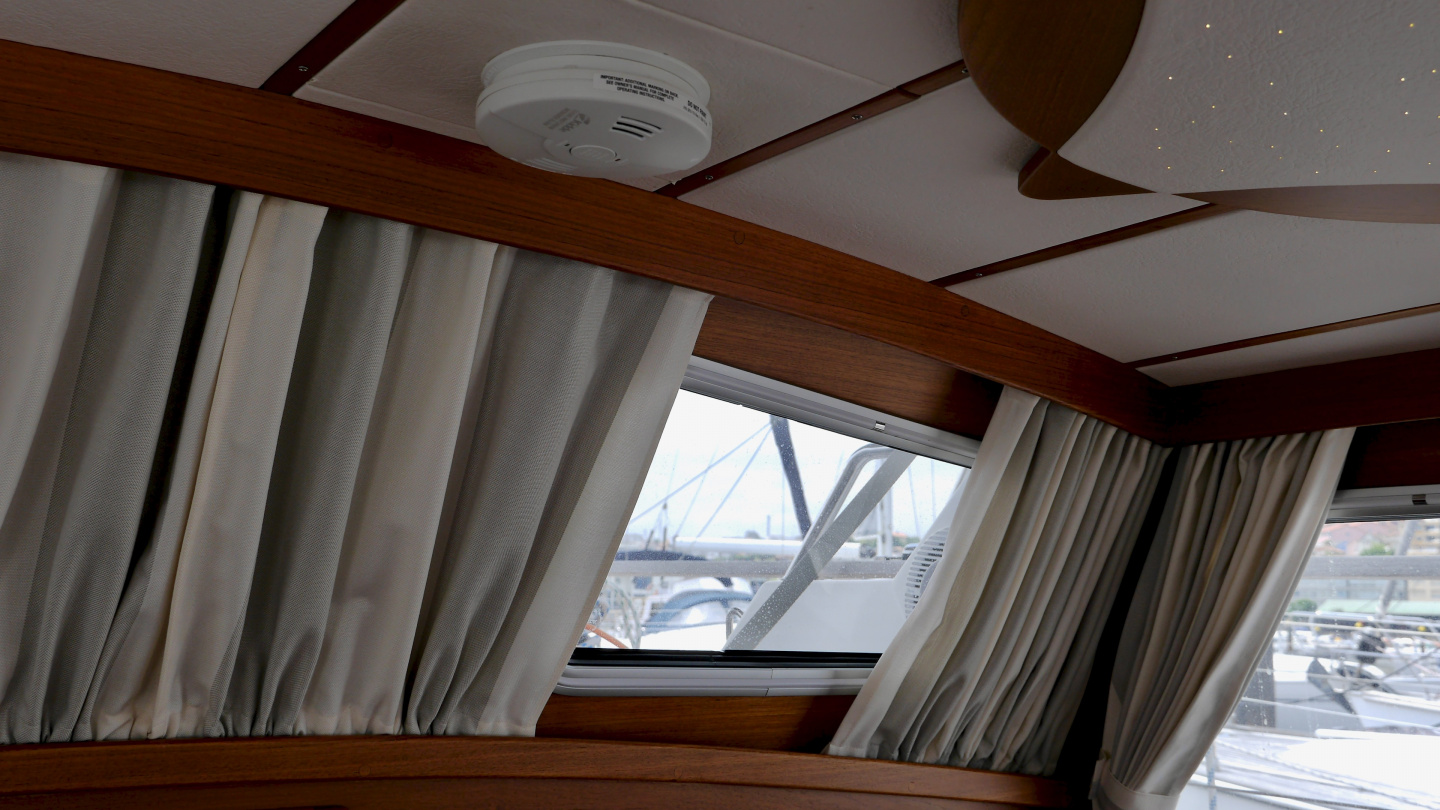“Warning, carbon monoxide! Warning, carbon monoxide!” is not something you’d like to hear at night for sure. Andrus was watching Netflix on iPad and I was listening audiobook when the warning suddenly sounded. As CO is odourless gas and silent killer we quickly opened the windows and hatches and started to investigate what is going on?
Nothing seemed to be burning but the main battery was still been charged at 30 amps. Andrus had connected shore power earlier in the afternoon and by now the batteries should had been fully charged. He quickly disconnected the charger and went checking the batteries in the engine room. The batteries were fire hot and one of them was swollen and bubbled, fortunately not exploded! We waited for some time, ventilated all spaces and went back asleep as nothing more could be done at night.

In the morning Andrus continued exploring the batteries and chargers. The batteries were still warm but not hot anymore. The voltage looked ok and we tried charging. The charging current started at 50 amps and descended to 10 amps later. This is way too much for a float charging-phase. The problem must be in either the batteries or in the charger.
We had replaced our 4 x 225 Ah AGM battery bank two years earlier in Ireland and two years lifetime is a way too short, indeed. The batteries replaced in Ireland were 4 years old and this also is too short for high quality batteries.
We’re about to start our crossing of the Bay of Biscay and going offshore with faulty electrical system is clearly a no-no. After thinking out all our options we decided to continue to La Rochelle. There is some bad weather coming to Biscay and La Rochelle would be a nice place to sit it out or in case we have to wait for spare parts as well. In best case Suwena’s electric system would be fixed by the time the strong winds passed and we could continue further south. There is another charger on the engine and for making sure that there would be no fire Andrus ran the engine for two hours in our berth before we departed to La Rochelle.
In La Rochelle the marina made recommendation to use Pochon company for fixing Suwena’s electric system. They must be the most professional boat electricians we’ve ever met. Not only they quickly diagnosed the fault being a thermal runaway that happens when AGM batteries are overcharged with too high current in hot environment but they also traced the wiring and called Mastervolt charger support several times when solving the mystic behaviour of the charger.
In the end the root cause of all the problems with batteries over the years was improper installation from the beginning at Nauticat boatyard. We have two Mastervolt Mass 50A chargers. Both of the chargers come with own temperature sensor that should be glued to the hottest part of the battery bank e.g. close to the plus connection. However both of our temperature sensors were at the bottom of the bilge in a cool location covered with the mix of oil and water. Somehow sensors’ wires were hidden behind some other installations and even Andrus was looking fully puzzled after finding the sensors. He has opened every nook and granny he has found on the boat while servicing our equipment but he had also missed the two hanging sensors in the bilge. Additional twist in the story is that one of sensors was not even connected to the charger. The charger connections are behind a metal cover that needs unscrewing for access. Inside there the sensor’s wire was just fastened with cable ties to the casing and it was fully disconnected.
To make a long story short, due to faulty wiring the charger was thinking that the batteries were cool and thus it was charging with full current. We were also in a middle of a major heatwave without much wind and we’ve been motoring a lot. After turning the engine off the temperature inside the engine room increases and we usually connect a shore power about the same time just after arriving to the marina. All together the possibility for overcharging existed and hence the thermal runaway.
Fortunately we had no fire and CO alarm probably saved our lives. As the boats are full of all kinds of equipment we think that having a carbon monoxide detector onboard should be mandatory.
Pro tip! Carbon monoxide is lighter than air and the alarm should be fitted to the highest ceiling of the boat. If you sleep with cabin doors shut then it is also a good practice to fit the alarm into each cabin.

We also send our best wishes and many thanks to the professional team at Pochon in La Rochelle. We can warmly recommend their services to anybody needing any electrical or electronics installations onboard.


Hei, löysin bloginne
Hei, löysin bloginne sattumalta viime vuonna. Toivoisin että päivittäisitte tiheämpään, vaikka uutta teksiä ei välttämättä tule niin kuvanne ovat hienoja. Oma veneilymme keskittyy Turun ja mökkisaaren väliseen matkaan jäätilanteesta riippuen sekä satunnaisiin päiväretkiin Saaristomerellä AMT 170 BRs-veneellä.
I can confirm that Pochon is
I can confirm that Pochon is reliable.
Should you visit La Rochelle again, I’d be glad to meet you : I didn’t know that Kornog, the Celt’s god of Winds, was pushing Suwena towards the coasts of Vendée.
Our NC 441 is under construction for a delivery next spring and the relation of your journey across the European waters makes us very impatient to sail with her !!
We have a house on the Ile de Ré, close to La Rochelle, and we would be delightful to know you and to take advantage of your experience of the NC 441 if you sail in our “pertuis” again.
Thierry